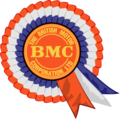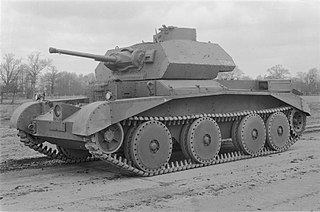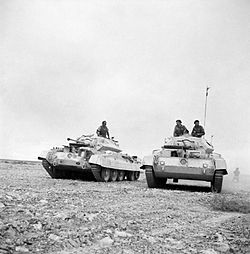
Airspeed Limited was established in 1931 to build aeroplanes in York, England, by A. H. Tiltman and Nevil Shute Norway. The other directors were A. E. Hewitt, Lord Grimthorpe and Alan Cobham. Amy Johnson was also one of the initial subscribers for shares.

Morris Motors Limited was a British privately owned motor vehicle manufacturing company formed in 1919 to take over the assets of William Morris's WRM Motors Limited and continue production of the same vehicles. By 1926 its production represented 42 per cent of British car manufacture—a remarkable expansion rate attributed to William Morris's practice of buying in major as well as minor components and assembling them in his own factory.

The British Motor Corporation Limited (BMC) was a UK-based vehicle manufacturer formed in early 1952 to give effect to an agreed merger of the Morris and Austin businesses.

William Richard Morris, Viscount Nuffield,, was an English motor manufacturer, philanthropist and prominent financier of the British fascist movement. He was the founder of Morris Motors Limited and is remembered as the founder of the Nuffield Foundation, the Nuffield Trust and Nuffield College, Oxford, as well as being involved in his role as President of BUPA in creating what is now Nuffield Health. He took his title from the village of Nuffield in Oxfordshire, where he lived.

Riley was a British motorcar and bicycle manufacturer from 1890. Riley became part of the Nuffield Organization in 1938 and was merged into the British Leyland Motor Corporation in 1968. In July 1969 British Leyland announced the immediate end of Riley production, although 1969 was a difficult year for the UK automotive industry and many cars from Riley's inventory may have been first registered in 1970.

The Cromwell tank, officially Tank, Cruiser, Mk VIII, Cromwell (A27M), was one of the series of cruiser tanks fielded by Britain in the Second World War. Named after the English Civil War–era military leader Oliver Cromwell, the Cromwell was the first tank put into service by the British to combine high speed from a powerful, reliable engine and reasonable armour. The intended dual-purpose high-velocity gun could not be fitted in the turret, so a medium-velocity dual-purpose gun was fitted instead. Further development of the Cromwell combined with a high-velocity gun led to the Comet tank.

Crusader, in full "Tank, Cruiser Mk VI, Crusader", also known by its General Staff number A.15, was one of the primary British cruiser tanks during the early part of the Second World War. Over 5,000 tanks were manufactured and they made important contributions to the British victories during the North African campaign. The Crusader only saw active service in Africa but the chassis of the tank was modified to create anti-aircraft, fire support, observation, communication, bulldozer and recovery vehicle variants.

The cruiser tank was a British tank concept of the interwar period for tanks designed as modernised armoured and mechanised cavalry, as distinguished from infantry tanks. Cruiser tanks were developed after medium tank designs of the 1930s failed to satisfy the Royal Armoured Corps. The cruiser tank concept was conceived by Giffard Le Quesne Martel, who preferred many small light tanks to swarm an opponent, instead of a few expensive and unsatisfactory medium tanks. "Light" cruiser tanks carried less armour and were correspondingly faster, whilst "heavy" cruiser tanks had more armour and were slightly slower.

The Rolls-Royce Meteor later renamed the Rover Meteor is a British tank engine that was developed during the Second World War. It was used in British tanks up to 1964. It was a result of co-operation between Leyland Motors and Rolls-Royce who between them in 1941 had suggested that a specialised de-rated version of the Merlin aero-engine would be highly suitable for use in armoured fighting vehicles.

The Cruiser tank Mk V or A13 Mk III Covenanter was a British cruiser tank of the Second World War. The Covenanter was the first cruiser tank design to be given a name. Designed by the London, Midland and Scottish Railway as a better-armoured replacement for the Cruiser Mark IV, it was ordered into production in 1939 before pilot models were built. Problems with the design became apparent only after production was under way.

The Tank, Cruiser, Mk III, also known by its General Staff specification number A13 Mark I, was a British cruiser tank of the Second World War. It was the first British cruiser tank to use the Christie suspension system, which gave higher speeds and better cross-country performance; previous cruiser tank models had used triple wheeled bogie suspension.

The Cruiser Tank Mk IV was a British cruiser tank of the Second World War. It followed directly on from the Tank, Cruiser, Mk III. The first Mk IVs were Mk IIIs with extra armour fitted to the turret. Later Mk IVAs were built with the complete extra armour. The tank was used in France in 1940 and in the early part of the war in North Africa, before being withdrawn from service. A fast vehicle compared to other British tanks of the early part of the war, it was probably the best cruiser tank Britain had in 1940. In total, 955 of these tanks were built.

Nuffield Organization was the unincorporated umbrella-name or promotional name used for the charitable and commercial interests of owner and donor, William Morris, 1st Viscount Nuffield. The name was assumed following Nuffield's gift made to form his Nuffield Foundation in 1943, it linked his business interests to his existing very generous philanthropy. The same enterprises had previously been referred to as the Morris Organizations and at first described itself as The Nuffield Organization, A Cornerstone of Britain's Industrial Structure.

Wolseley Motors Limited was a British motor vehicle manufacturer founded in early 1901 by the Vickers Armaments in conjunction with Herbert Austin. It initially made a full range, topped by large luxury cars, and dominated the market in the Edwardian era. The Vickers brothers died and, without their guidance, Wolseley expanded rapidly after the war, manufacturing 12,000 cars in 1921, and remained the biggest motor manufacturer in Britain.

The Liberty L-12 is an American water-cooled 45° V-12 aircraft engine displacing 1,649 cubic inches (27 L) and making 400 hp (300 kW) designed for a high power-to-weight ratio and ease of mass production. It saw wide use in aero applications, and saw marine use both in racing and runabout boats once it was marinized.
The Tank, Cruiser, Mk VII Cavalier (A24) was an interim design of British cruiser tank during the Second World War.
This article lists British armoured fighting vehicle production during the Second World War. The United Kingdom produced 27,528 tanks and self-propelled guns from July 1939 to May 1945, as well as 26,191 armoured cars and 69,071 armoured personnel carriers.

The Airspeed AS.6 Envoy was a twin-engined light transport aircraft designed and produced by the British aircraft manufacturer Airspeed Ltd.
Morris Engines Limited was located in Coventry, England. It specialised in the mass production of engines and gearboxes for vehicles made by W. R. Morris's businesses, later known as the Nuffield Organization. Morris Engines Ltd. was, therefore, partly responsible for Morris Motors Ltd. becoming Britain's leading motor manufacturer.

British shadow factories were the outcome of the Shadow Scheme, a plan devised in 1935 and developed by the British government in the buildup to World War II to try to meet the urgent need for more aircraft using technology transfer from the motor industry to implement additional manufacturing capacity.





















